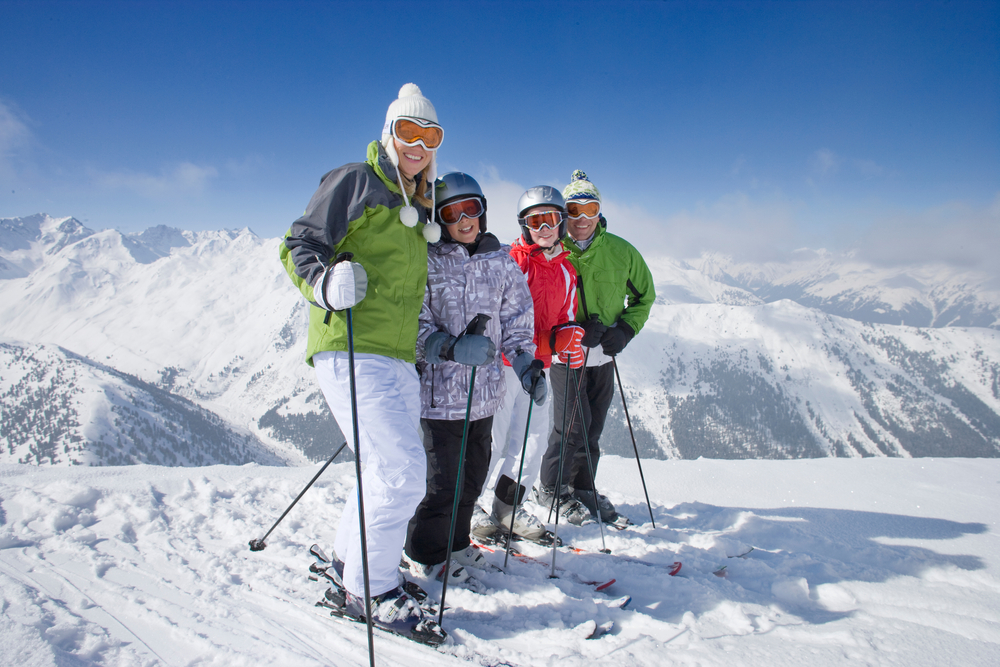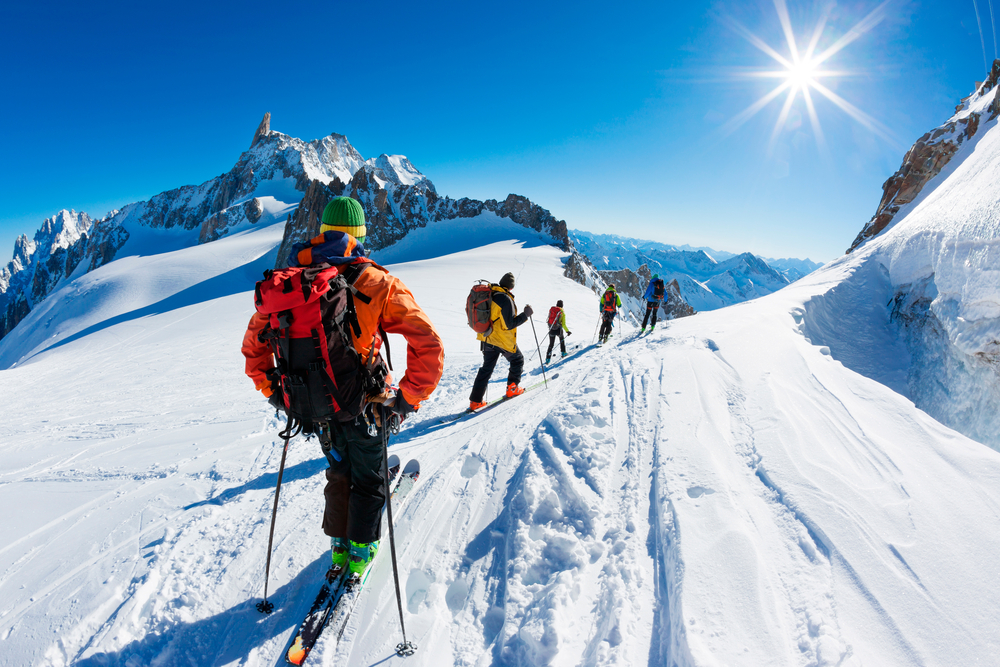Embarking on a ski trip is an exhilarating adventure, where the crisp mountain air and the promise of fresh powder create a winter wonderland for outdoor enthusiasts. Whether you’re a first-timer planning to conquer the legendary slopes of Vail, a seasoned skier on a mission to carve through the pristine trails of Park City, or simply want to immerse yourself in the vast alpine terrain of Big Sky, careful preparation is the key to a seamless and enjoyable experience. As the snow-covered landscapes beckon, our ski trip packing list will ensure you’re well-equipped to tackle the slopes and embrace the chilly beauty of these iconic destinations. From the essentials that keep you warm and cozy to the gear that enhances your skiing prowess, let this guide help you gear up for an unforgettable ski adventure.
Ski Trip Checklist
If you’re reading this, you’re likely wondering: What do I need for a ski trip? Worry not, because we’ve got you covered. When referring to a “ski trip,” this includes both skiing and snowboarding. No matter what your skill level is for either of these snow sports, here’s an overview of what to pack for a ski trip to make your outdoor winter adventure a successful one.
- Lift ticket or pass
- Skis or snowboard
- Helmet
- Goggles
- Gator or face mask
- Thermals or base layers
- Waterproof skiing or snowboarding jacket
- Waterproof gloves
- Ski or snowboard boots
- Thick socks
- Sneakers or slides
- Backpack or fanny pack
- Hydration pack or water bottle
- Lip balm
- Face sunscreen
- Beanie
- Walkie talkie
- Small hand towel
- Power bank
- Snacks for the mountain
- Sunglasses
Ski Trip Attire
When it comes to your ski trip attire, staying warm and comfortable should be top of mind. This means layering up and opting for waterproof gear as much as possible. Here’s what you need to wear if you’re going skiing or snowboarding, from head to toe:
- Helmet. No matter what your skill level is, wearing a helmet is absolutely necessary. If you’re a beginner, you’re likely to fall every now and then, so it’s essential to protect your head. Alternatively, if you’re an expert zooming down the mountain at over 40 miles per hour, having a helmet can ease the blow in the event that you accidentally take a tumble.
- Goggles made for skiing or snowboarding. These are extremely handy for when it starts to snow, so you can keep the snow out of your eyes. Some goggles also have low-light lenses that make it easier to see when there’s low visibility, while others are polarized to reduce glare and eye strain.
- Gator or face mask. Gliding down the mountain means lots of wind in your face. Wearing a gator or face mask can prevent your face from windburn or extremely dry skin.
- Thermals or base layers. Wear these under your snow pants to keep yourself warm.
- Second layer or sweater. If you’re not used to being in below-freezing temperatures, it helps to wear a second layer over your base layers. If you get too hot, you can always remove the second layer, but it’s always better to be over-prepared.
- Waterproof skiing or snowboarding jacket. Using a jacket that’s made specifically for snow sports will ensure you stay as warm and dry as possible. Most of these jackets also have zippers along each pocket to ensure you don’t lose anything on the mountain.
- Waterproof pants or bib. Among your list of ski trip essentials should be proper snow pants! Similar to having a waterproof jacket, your bottoms should be equally as waterproof — if not more so — because you may find yourself sitting on snow! You can opt for good ol’ reliable pants or a bib, which are basically overalls that prevent snow from getting inside.
- Waterproof gloves. Spare yourself from frostbite and get a reliable pair of waterproof gloves. It helps to find gloves that also have a strap that you can attach around your wrists so you don’t lose them any time you need to take them off, especially while you’re on the chairlift.
- Ski poles. Ski poles are essential for skiers as they provide balance and support, especially on uneven terrain. Bear in mind that ski poles are only used for skiing, not snowboarding.
- Thick, long socks. Since you’ll probably be on your feet all day, you need to make sure you have a comfortable pair of thick, long socks. Don’t use ankle socks, as they may feel uncomfortable over time. It also wouldn’t hurt to pack an extra pair.
- Well-fitting ski or snowboard boots. Your boots should be compatible with your skis or snowboard. Make sure you try your boots on in advance and check that they work with the rest of your ski gear.
- Sneakers or slides. Having a pair of shoes that’s easy to slide on and off comes in handy after you’re done hitting the slopes. If you’ve worn ski or snowboard boots before, you know they’re less comfortable to walk in than your average sneakers or slides, so this will ensure you’re comfortable after a full day of physical activity.

What to Bring in Your Daypack
Carrying a daypack is totally optional — especially if you’re a beginner — but having a backpack or fanny pack with you at all times allows you to carry everything you need for the day. It’s also a good way to prepare for emergencies. Here’s a checklist of optional skiing essentials to include in your daypack:
- Hydration pack or water bottle. Staying hydrated is key! While there’s probably water available somewhere on the mountain, it’s also good to have your own if you’re able to bring it with you.
- Lip balm. With below-freezing temperatures and wind in your face, your lips may get extremely dry. Keeping lip balm in your pocket will save you from the hassle of chapped or cracking lips on the mountain.
- Face sunscreen. Even if it doesn’t look like a hot summer day, it’s always good to have SPF protection on your face. If you don’t take a daypack with you, don’t forget to put sunscreen on beforehand.
- Beanie. A beanie is a good choice for extra warmth. Some people wear beanies under their helmets, while others put them on whenever they take their helmets off.
- Walkie talkie. It’s always good to ski or snowboard with at least one other person, as the mountain can be unpredictable and someone should always know where you are. Because having cell phone service isn’t always a guarantee, it helps to bring walkie-talkies with you. Just be sure to test them out before you hit the slopes!
- Small hand towel. While skiing and snowboarding call for extremely cold weather, engaging in physical activity while wearing thick layers of clothing can sometimes lead to breaking a sweat. Having a small towel in your daypack is handy for wiping your sweat or de-fogging your goggles.
- First aid kit. When it comes to preparing for emergencies, a first aid kit is your best friend. At a minimum, you can include pain medication, band-aids, and a bandage wrap.
- Power bank. One minor emergency that can happen on the mountain is your phone dying. To prevent that from happening, you can pack a power bank and charger to ensure you can stay connected with your ski buddies.
- Snacks for the mountain. It’s no secret that food at some ski resorts can be expensive. To save on food costs during your ski trip, pack a lunch and snacks in your daypack.
- Sunglasses. You may already have goggles that offer sun protection for your eyes, but having sunglasses is a nice option as well.

Skiing Essentials for Beginners
If it’s your first time skiing or snowboarding, there are a couple of extra essentials you can consider packing in your ski gear bag.
- Padded shorts. Having a pair of padded shorts under your snow pants can be incredibly helpful to protect your glutes, tailbone, and hips in the event of a bad fall.
- Knee pads. If you’re not falling on your behind, you may be landing on your knees! Having knee pads either inside or outside your snow pants is a safe bet.
More importantly, don’t forget to bring your sense of adventure and willingness to learn! For more information, check out our guide on A First Timer’s Complete Guide to a Ski or Snowboard Trip.
Ski Trip Inspiration
Now that you know what to bring on a ski trip — if you’re searching for your next snow-capped destination, look no further! Here are three of our favorite destinations across the United States, along with incredible accommodations in each city.
Vail, Colorado
Nestled in the heart of the Rocky Mountains, Vail boasts breathtaking alpine scenery with majestic peaks and pristine snow-covered landscapes. The city’s namesake ski resort offers an expansive and diverse terrain, catering to all levels of skiers and snowboarders. Vail Ski Resort is family-friendly and home to 195 ski runs.
This resort offers everything you need for a perfect ski trip to Vail, including the option to rent skis and snowboards on-site. You can hop on the free shuttle service to Eagle Bahn Gondola, just a five-minute walk away. After a full day on the slopes, take some time to relax and unwind in the resort’s large heated pool or hot tubs while admiring the stunning surroundings.
Park City, Utah
Boasting two world-class ski resorts — Park City Mountain and Deer Valley Resort — Park City in Utah offers an extensive range of slopes for beginners and expert powder hounds alike. The town exudes a welcoming atmosphere, with its historic Main Street lined with boutique shops, art galleries, and award-winning restaurants. Park City’s accessibility from Salt Lake City International Airport adds to its allure, making it convenient for travelers seeking a quick and easy mountain getaway.
When planning a ski trip to Park City, Utah, we recommend staying at Marriott’s MountainSide. With ski-in/ski-out access and breathtaking views of the Wasatch Mountains, this hotel offers an unforgettable experience for winter enthusiasts. Guests can indulge in homemade chili served by the fire in the lobby while enjoying the property’s homely ambiance.
Big Sky, Montana
A ski trip to Big Sky, Montana, will be nothing short of epic, as it’s home to one of the largest ski resorts in the United States. The city is a captivating ski destination, celebrated for its breathtaking scenery and authentic mountain town atmosphere. Big Sky Resort — located less than six miles from the city center — offers an extensive terrain that caters to powder hounds of all levels. The iconic Lone Peak dominates the skyline, providing thrilling descents and panoramic views.
This luxurious five-star hotel is a haven for ski enthusiasts, offering unrivaled convenience with ski-to-door access and breathtaking views of the majestic mountains. The rooms at Montage Big Sky are nothing short of perfection, with spacious layouts and all the amenities you need for a ski trip. Wake up each morning to stunning vistas and indulge in a hearty breakfast that will fuel your day of adventure on the slopes.